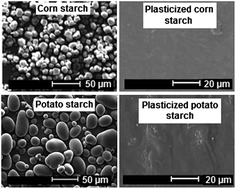Progress in bio-based plastics and plasticizing modifications
Abstract
Over the coming few decades bioplastic materials are expected to complement and gradually replace some of the fossil oil based materials. Multidisciplinary research efforts have generated a significant level of technical and commercial success towards these bio-based materials. However, extensive application of these bio-based plastics is still challenged by one or more of their possible inherent limitations, such as poor processability, brittleness, hydrophilicity, poor moisture and gas barrier, inferior compatibility, poor electrical, thermal and physical properties. The incorporation of additives such as plasticizers into the biopolymers is a common practice to improve these inherent limitations. Generally, plasticizers are added to both synthetic and bio-based polymeric materials to impart flexibility, improve toughness, and lower the glass transition temperature. This review introduces the most common bio-based plastics and provides an overview of recent advances in the selection and use of plasticizers, and their effect on the performance of these materials. In addition to plasticizers, we also present a perspective of other emerging techniques of improving the overall performance of bio-based plastics. Although a wide variety of bio-based plastics are under development, this review focuses on plasticizers utilized for the most extensively studied bioplastics including poly(lactic acid), polyhydroxyalkanoates, thermoplastic starch, proteinaceous plastics and cellulose acetates. The ongoing challenge and future potentials of plasticizers for bio-based plastics are also discussed.


 Please wait while we load your content...
Please wait while we load your content...